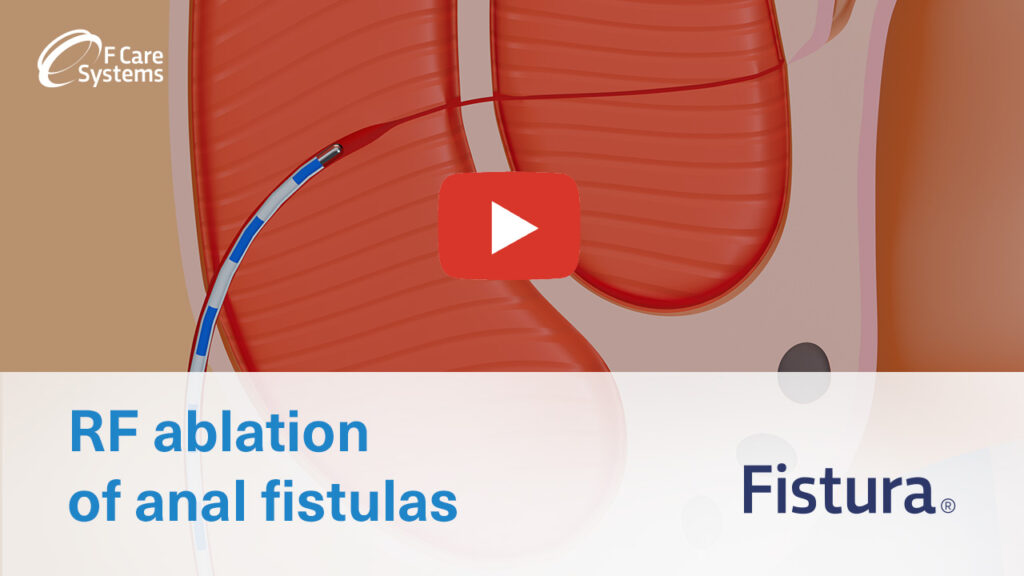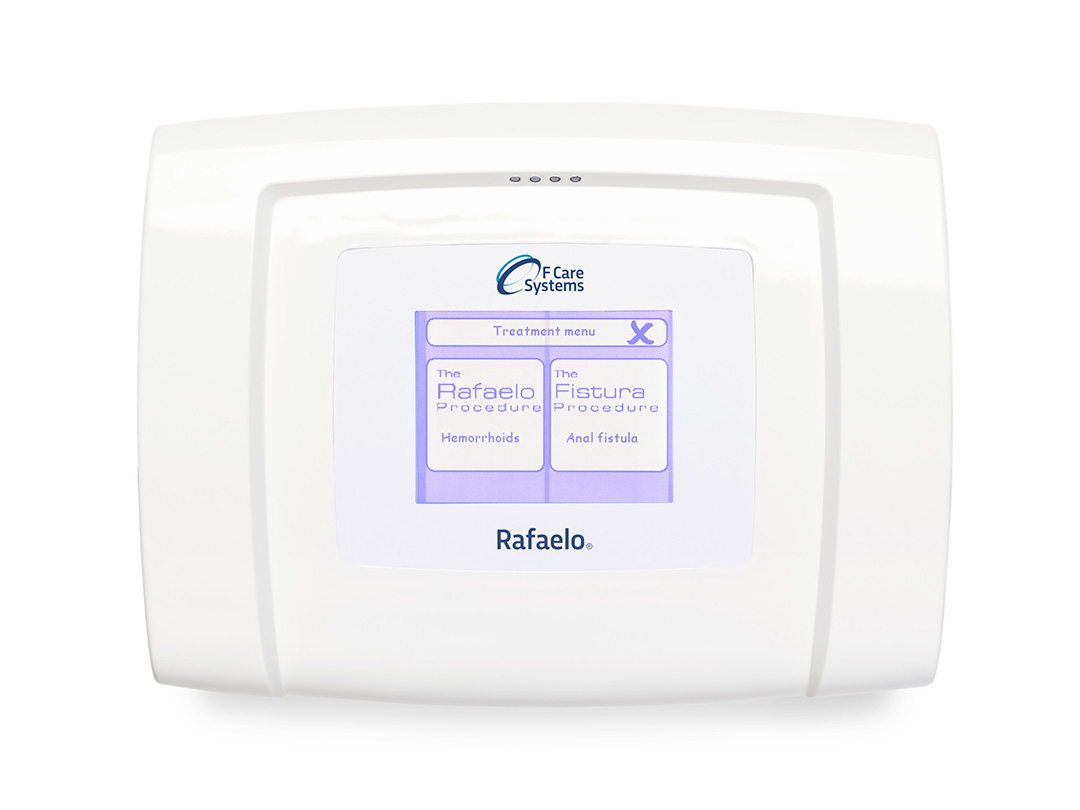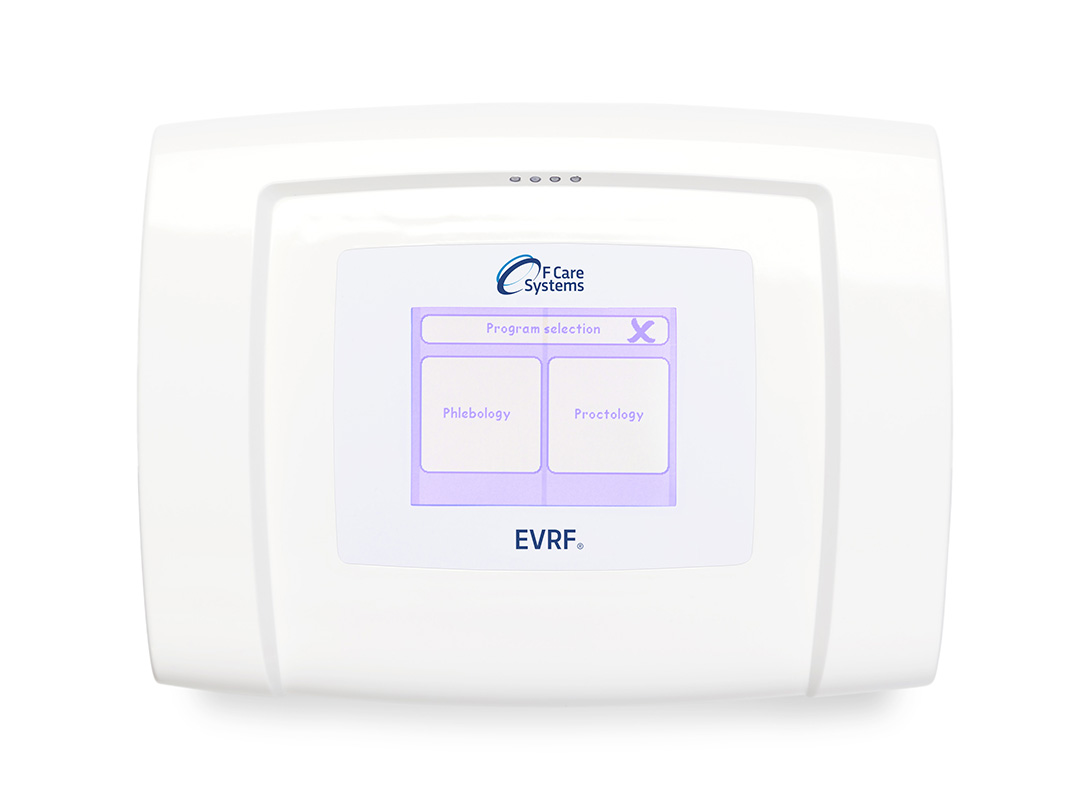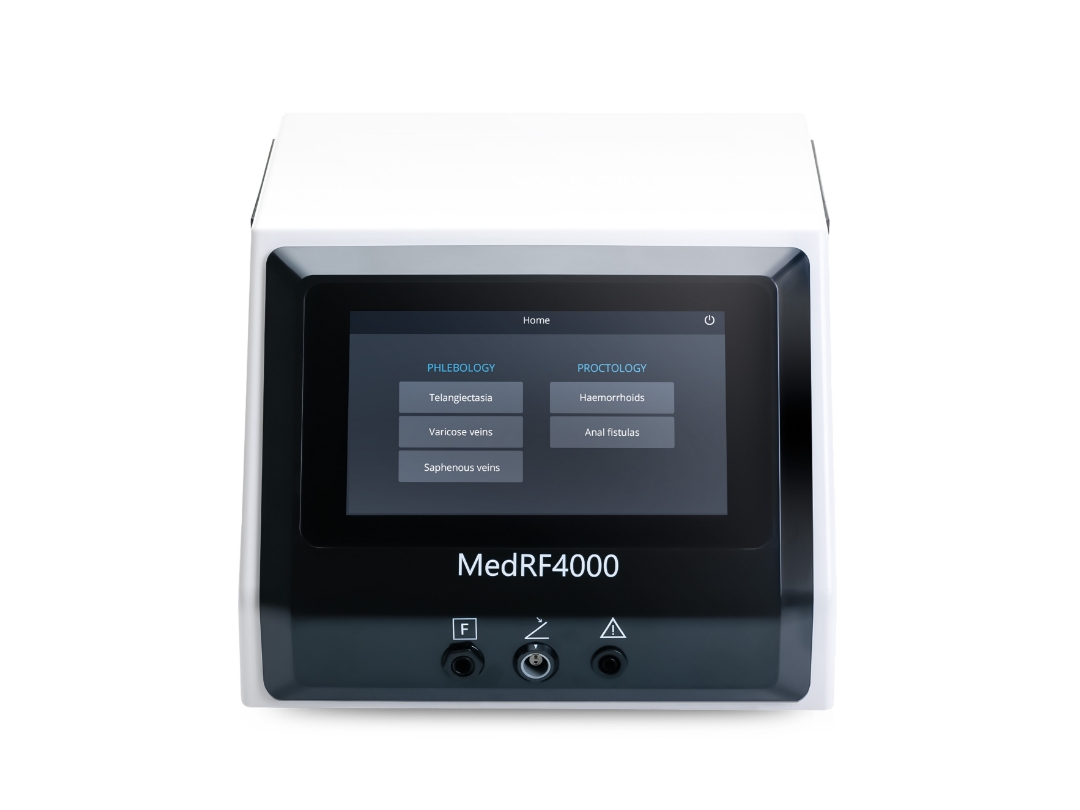This website uses cookies so that we can provide you with the best user experience possible. Cookie information is stored in your browser and performs functions such as recognising you when you return to our website and helping our team to understand which sections of the website you find most interesting and useful.

Radiofrequency ablation of anal fistulas | Fistura®
The Fistura® procedure
Radiofrequency treatment of anal fistulas
With an estimated incidence rate of 1-2 per 10,000 people, fistula-in-ano (also known as anal or perianal fistula) is the most common form of fistula; among patients with Crohn’s disease, prevalence estimates range as high as 7%. Anal fistulas have various causes, but they are most often the result of anorectal abscesses—around 50% of patients with abscesses subsequently develop fistulae. Though benign, fistulas and their related symptoms can cause patients significant distress.
Fistula-in-ano is often treated surgically, for example via fistulotomy (with or without prior Seton placement, depending on fistula complexity and degree of sphincter involvement) or an endorectal advancement flap. Such procedures, however, require weeks of recovery and carry a significant risk of healing failure, sphincter damage, and/or post-operative anal incontinence.
As a result, more and more healthcare professionals are turning instead to minimally invasive, sphincter-sparing treatments like Fistura®, in which the anal fistula is ablated using radiofrequency energy. Fistura® employs the principle of thermocoagulation, which is already widely used in a range of vascular, dermatological, and oncological applications. The procedure can be performed as a day case and causes minimal discomfort; most patients can resume their normal activities within a few days. Post-treatment care usually consists of analgesics and wound care.
Advantages for patients
- Minimally invasive—no incision means no risk of incontinence
- Little to no discomfort
- Can be performed on an outpatient or day-case basis
- Allows quick return to daily activities
- Minimal post-operative care
Advantages for practitioners
- Quick, efficient alternative to more invasive techniques
- Simple to perform
- Sphincter-sparing technique minimises complications (e.g., incontinence)
- Suitable for treating patients with Crohn’s disease
- Precise energy control prevents damage to surrounding tissue
Treatment protocol

2. Use a fistula brush or curette to clean the tract of any debris, taking care to avoid widening the fistula in the process.

3. Close the internal fistula opening with a cross suture.

4. Choose a catheter size appropriate to the diameter of the fistula (6F to 9F). Insert the catheter into the anal fistula from the external opening until it reaches the sutured internal end.

5. Verify that the catheter and the electrosurgical pad are connected properly, and then press the foot pedal to apply energy. Draw the catheter back gradually, about one marking (= 5 mm) every 12 seconds; the device will beep as a prompt.

6. Remove the catheter periodically to clean the tip and reinsert.

7. Work from end to end, occasionally pushing the catheter forward to make sure that the fistula tract is properly sealed.
Clinical studies
Prospective and multicentre study of radiofrequency treatment in anal fistula
Marie Sautereau, Dominique Bouchard, Charlène Brochard, François Pigot, Laurent Siproudhis, Jean Marie Fayette, Cécile Train, Anne Laurain, Charlotte Favreau, Laurent Abramowitz;
Colorectal Disease; September 21, 2022









